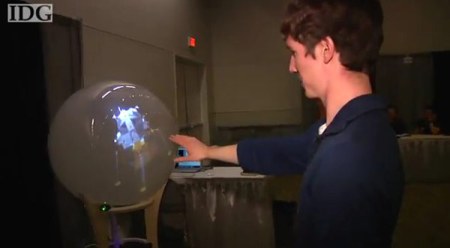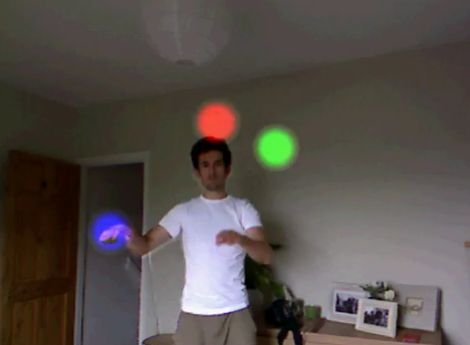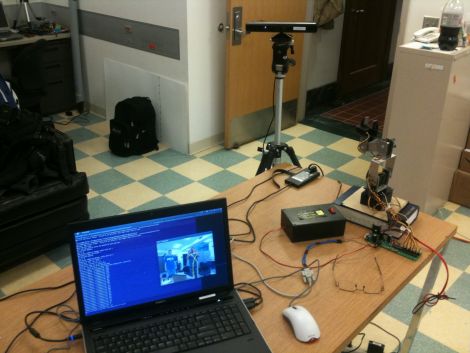
Summer has hit, and with it a bunch of crazy people going to crazy festivals and (often) burning crazy sculptures to crazy music! In that vein [Matthew Goodman] recently got involved in the burning flipside community down in Texas for his first big effigy build. The project called for a gigantic archway flanked by two human shaped figures, since he had been working in Kinect [Matt] decided to try his hand at physically modeling the figures from Kinect mesh data.
After co-registering the depth and image cameras, setting up a capture routine to record, getting .ply based meshes from the depth camera, and making a keypoint detector [Matt] was ready to start getting real world data from the Kinect. Armed with a ghetto steadycam built from his local Austin Hackerspace‘s spare parts bin, [Matt] proceeded to collect three 1.5 gigabyte scans of the charming [KT], who served as a model for the sculpture.
Once the meshes were imported to sketchup they could be merged and smoothed into a coherent form. The figure was split into CNC-able parts (known as the “lady bits” by [Matt] and his crew) and sent to local makers [Dave Umlas] and [Marrilee Ratcliff]’s ShopBot CNC mill. The 400 some odd bits of wood were then carted to flipside, methodically set up, and promptly set aflame the end of the event.
We have seen a couple of really interesting burning man projects, but this is possibly the shortest lived end result. Stay tuned this summer for more insane Black Rock City bound creations as well. Also don’t forget to check out [Matt]’s site for more details.















